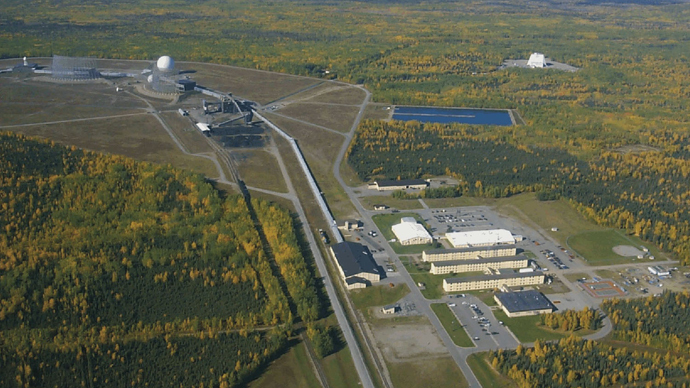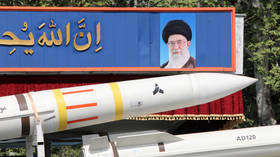Pentagon eyes Alaska for $1bn missile defense radar against Iran, N.Korea

The US Department of Defense says Alaska is its preferred location to deploy a new long-range “must-have” radar to enable missile defense systems to better intercept potential enemy threats, such as from Iran or North Korea.
The Pentagon says that the new Long Range Discrimination Radar
(LRDR) will begin defensive operations in 2020 and will boost the
capacity of ground-based interceptors in Alaska and California.
The Clear Air Force Station, an Air Force Space Command radar
station in central Alaska, has been chosen as the preferred
location for the radar.
"The new LRDR will serve as a midcourse sensor to improve target
discrimination capability for our Ballistic Missile Defense
System (BMDS) to better address potential countermeasures and
increase the capacity of the ground-based midcourse defense (GMD)
inventory of interceptors in Alaska and California,"the Pentagon said in a statement.
The Missile Defense Agency is currently busy working on the
design and development of the radar, assessing industry proposals
"to meet the required technical performance to counter the
emerging threat and support future BMDS architecture needs."

Major US defense contractors such as Raytheon (the world's largest producer of guided missiles), Northrop Grumman (the world's fifth-largest defense contractor) and aerospace giant Lockheed Martin are competing to build the new radar, which, according to Reuters, is expected to cost just under $1 billion. The Missile Defense Agency invited bids in January and is expected to award a contract by the end of September.
According to Missile Defense Agency director James Syring, the
new radar will be crucial in combating the growing capabilities
of North Korea and Iran.
“The LRDR is critically important to where I see the threat from
North Korea going in the near future, with the capability of
becoming more complex, requiring more interceptors,” Alaska
Public Media quoted Syring as saying in March.
Earlier this week, Admiral James Winnefeld Jr,, chairman of the
US Joint Chiefs of Staff, told the Washington-based Center for Strategic and International
Studies that the number of countries trying to achieve the
capability to carry out "catastrophic attacks" on the US
is "growing, not shrinking." Winnefeld said that
"our most immediate concern, of course, being North Korea
because they're closest in terms of capability, followed by
Iran."
"A robust and capable missile defense is our best bet to defend
the United States from such an attack," Winnefeld said
Tuesday.
Pentagon launching missile defense blimps to patrol East Coast (VIDEOS http://t.co/AOXGC73nmQpic.twitter.com/M55VFEck40
— RT America (@RT_America) December 18, 2014
He earlier described LRDR as a “must have” radar to
“keep our nation ahead of the threat,”Alaska Native News reported.
According to Missile Defense Advocacy Alliance, Alaska’s unique
geostrategic location makes it the “only state from where one
can defend all 50 states from a long range ballistic missile
attack coming from the Northern Hemisphere, both east and west,
from Hawaii to Florida.” Two of the main land-based sensors
for tracking the North Korean missile threat are located in
Alaska.
Given the state's proximity to North Korean and Iranian missile
threats, Senator Lisa Murkowski said in March, at a hearing of
the Senate Defense Appropriations Subcommittee, that
“[Alaskans] know the justification for maintaining and
constantly improving a capable, credible and highly-advanced long
range discrimination radar (LRDR).”












